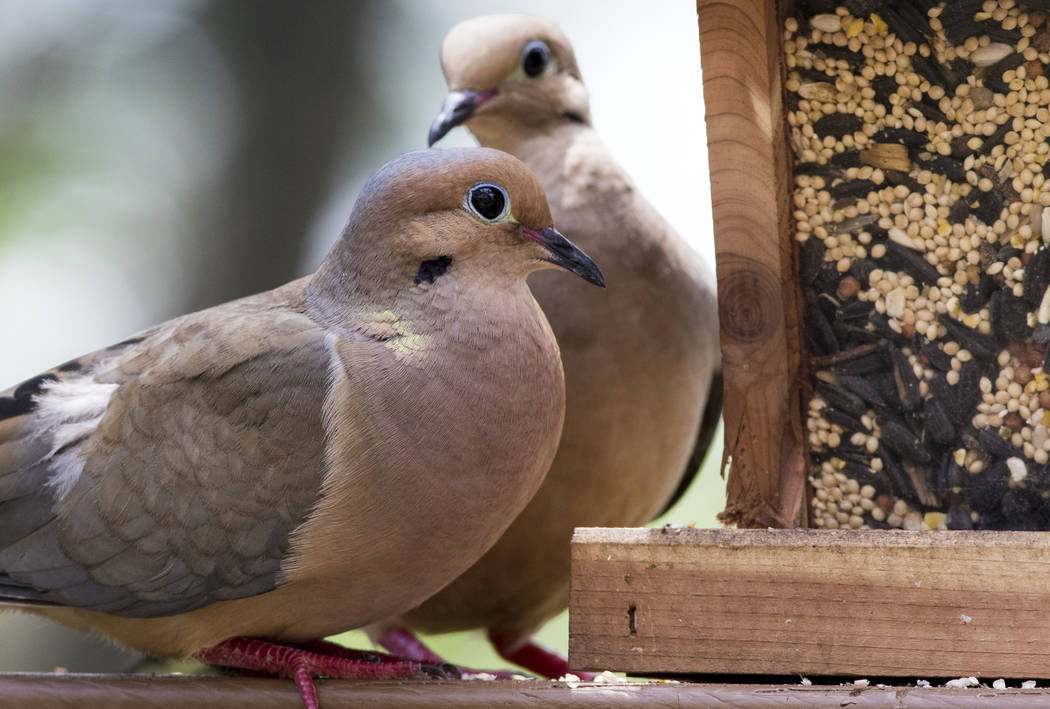Scout locations closely for dove season opening Sept. 1

Believe it or not, there was a time when a hunter living in the Las Vegas Valley could squeeze in an early morning dove hunt and still be on time for work.
All one had to do was make a quick trip to the Las Vegas Wash below Henderson, the pig farm in North Las Vegas or the outflow stream from Boulder City’s water treatment plant. Those locations were probably the most well-known, but no doubt there are many hunters who still call the valley home that had their own go-to spots.
Unfortunately, development and population growth have a way of closing doors for some of us while opening them for others. Where once there was open space, today there are lots of homes. That reality, combined with local regulations prohibiting the discharge of firearms in the Las Vegas Valley, has effectively closed the door to dove hunting in places one might consider convenient.
That, however, doesn’t mean there is nowhere to go when dove season opens Sept. 1. All you need is a willingness to put a few miles on your rig and an inclination to try something or someplace new.
One such place is the Fort Mohave Indian Reservation in the Mohave Valley, about 120 miles southeast of downtown Las Vegas. If reputations mean anything, some excellent dove hunting can be found on the nearly 42,000-acre reservation that straddles the lower Colorado River between Laughlin, Nevada, and Bullhead City, Arizona, on the north and Needles, California, on the south.
Geographically, parts of the reservation are in each of those three states — 23,669 acres in Arizona; 12,633 in California; and 5,582 acres in Nevada — but according to the man I spoke with at the tribe’s Fish and Game Department, all a hunter needs is a $35 tribal hunting permit to hunt any of the open areas on the reservation regardless of state boundaries.
“As long as they’re within the reservation boundaries they’re covered with just our permit. If they leave the reservation, then they are subject to having a state license,” he explained. “You just have to come in and purchase a dove hunting permit from us, from our department. That is good for both seasons. Our first season is from September 1 through 15. And then our second season is Nov. 24 through January 8.”
Most of the cultivated areas on the reservation are open to hunting. “The only exceptions are if the farmland is being worked on, if there is anybody working the area, or if there is a sign that otherwise states that they’re not allowed to hunt there. But for the most part everything is open,” the man said.
Permits can be purchased at the tribe’s Fish and Game Department office, 7500 Dike Road in Mohave Valley, Arizona. There is no way to purchase a license online, so be prepared to make a trip between now and opening morning if you want to give the Fort Mojave Indian Reservation a try. The office is open from 8 a.m. to 4 p.m., Monday through Friday. The office is open through Labor Day on Saturdays from 10 a.m. to 4 p.m. The phone number is 928-330-3000.
Be sure to pick up a map while you are there, and take some time to drive around and familiarize yourself with major roads and possible hunt locations. Keep in mind that you will most likely be arriving while it is still dark, so keep an eye out for landmarks that will be easy to recognize.
Though a state license is not required within the reservation boundaries, you will need a $5 Arizona migratory bird stamp. You can pick up the stamp at Wal-Mart or other license vendors. The tribal hunting guidelines mirror Arizona’s hunting regulations and season dates. Be sure to pick up a copy of the regulations and take time to read them. They also can be found online at www.azgfd.com.
Calendar Items
Applications for fire related emergency depredation hunts for mule deer and antelope in northern Nevada are now being accepted at www.huntnevada.com. The deadline is Aug. 25.
Hunting seasons for blue grouse, ruffed grouse and snowcock open Sept. 1. Check the regulations for open counties.
Freelance writer Doug Nielsen is a conservation educator for the Nevada Department of Wildlife. His “In the Outdoors” column, published Thursday, is not affiliated with or endorsed by the NDOW. Any opinions he states in his column are his own. Find him on Facebook at @dougwritesoutdoors. He can be reached at intheoutdoorslv@gmail.com












